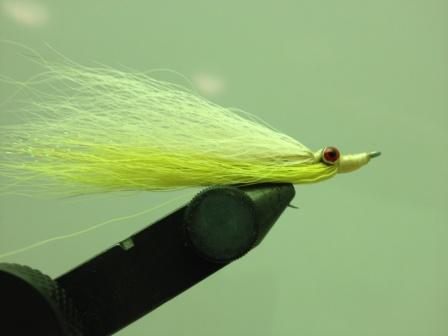After putting together my thoughts on the advantages of throwing an intermediate sink tip line, I figured it would be worthwhile to discuss how I basically accomplish a similar end result throwing a more manageable floating line. Moreover, in an estuarine environment like Charlotte Harbor where your working water depths no deeper than four feet, it possibly could be a better.
I’m referring to the Clouser style fly and the way it mimics the motion of a jig. For sure, with a spinning rod, fishing jigs like a soft plastic or feathered is one of the most effective ways to catch fish. As it drops to the bottom, it represents the fleeing movements of a panic stricken baitfish. With the Clouser, the weighted eyes positioned on the forward half of the fly serve the same purpose. I also like the way it rides hook up. Like some patterns, it doesn’t stop moving during the retrieve when the angler is not stripping. Basically, what baitfish would stop when chased by a predator? Due to the weight, it is a bit tougher to cast. However, there‘s no need to develop a tight loop, it calls for more of a wide loop that’s easy to learn. In fact, the Rio weight forward floating line that I use is designed to throw just this type of weighted saltwater fly.


Recent Comments